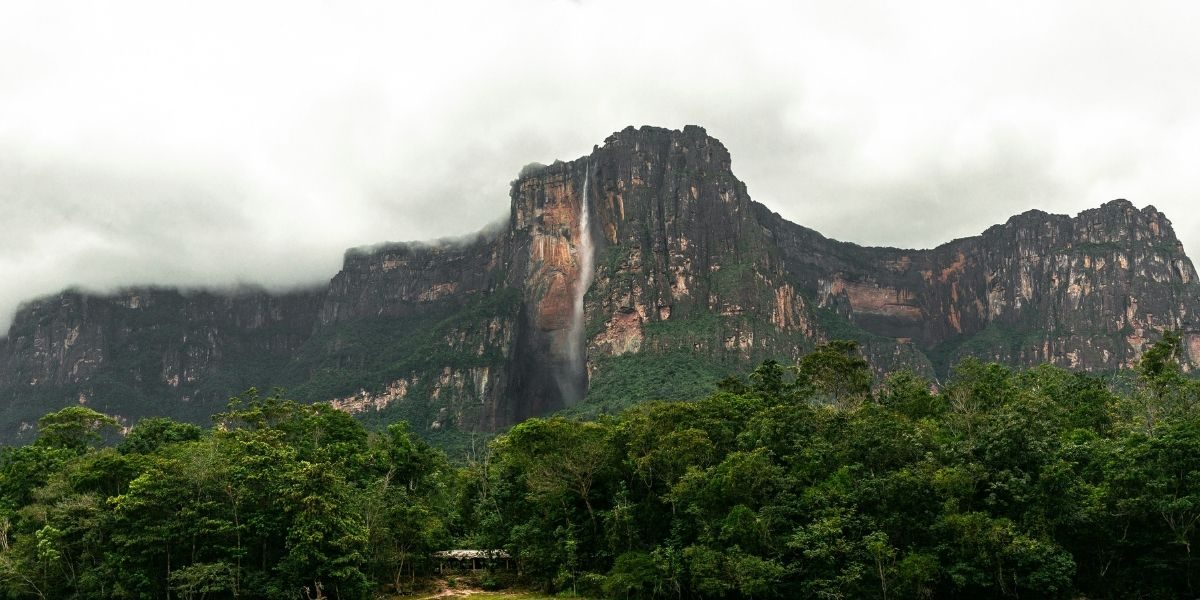Angel Falls: A Natural Wonder of Biodiversity, Indigenous Heritage, and Geological Grandeur in the Heart of Guyana
Angel Falls, known locally as Kerepakupai Merú, is not only the world’s tallest uninterrupted waterfall but a living symbol of the rich biodiversity, deep indigenous heritage, and geological marvels found in the heart of Guyana. Located in Canaima National Park, this awe-inspiring natural wonder has captivated explorers, scientists, and travelers for generations. Its cascading waters, lush surroundings, and cultural significance make it a profound testament to nature’s power and human connection.
Standing at an astonishing 979 meters (3,212 feet), Angel Falls dramatically drops from the Auyán-tepui mountain, one of the many tepuis or table-top mountains that characterize the Gran Sabana region of Guyana. These tepuis are ancient geological formations, formed over two billion years ago, making them some of the oldest exposed rock surfaces on Earth.
Read Also: Discover Jamaica’s Vibrant Culture and Natural Wonders
The falls themselves are a breathtaking spectacle of water plunging through a sheer cliff face, creating mist clouds visible from miles away. The geological processes that shaped this landscape, including erosion and tectonic uplift, have created a unique environment. This environment has remained largely untouched, preserving rare ecosystems found nowhere else on the planet.
How Does Angel Falls Reflect Biodiversity?
The area surrounding Angel Falls is a hotspot for biodiversity, hosting a remarkable variety of plant and animal species. Canaima National Park’s rainforest provides habitat for numerous birds, insects, amphibians, and mammals, many of which are endemic or threatened. Unique flora such as carnivorous plants thrive in this ecosystem, adapted to the nutrient-poor soils atop the tepuis. The isolation of these plateaus has led to the evolution of species found exclusively in this region, offering scientists invaluable opportunities to study evolution, adaptation, and conservation.
The waterfall’s misty environment creates microhabitats that support diverse life forms, contributing to the park’s recognition as a UNESCO World Heritage Site. These natural laboratories emphasize the interconnectedness of water, land, and life. For the indigenous Pemon people, Angel Falls is much more than a tourist attraction. Known as Kerepakupai Merú, or “Waterfall of the deepest place,” it holds spiritual and cultural significance. The Pemon have lived in the Gran Sabana region for centuries, their traditions and knowledge intricately tied to the land and its features.
Their oral histories and legends speak of the falls as a sacred site, a place of reverence and respect. This connection guides their stewardship of the environment, emphasizing sustainability and harmony. Visitors to the area often encounter indigenous guides who share stories and insights that deepen appreciation for the natural wonder. The relationship between the Pemon people and Angel Falls highlights the importance of integrating cultural heritage into environmental preservation efforts.
How Has Angel Falls Influenced Exploration and Science?
Angel Falls first captured global attention in the early 20th century, notably when American aviator Jimmie Angel flew over the falls in 1933. His discovery led to increased interest in the region’s geography and ecology. Since then, scientists and explorers have studied the area’s unique geology, hydrology, and biology. The falls and surrounding tepuis serve as natural laboratories for research on ancient ecosystems and climate history. These investigations have contributed to broader understanding of Earth’s natural history, biodiversity hotspots, and conservation needs. Angel Falls continues to inspire scientific inquiry and environmental advocacy worldwide.
Despite its remote location, Angel Falls faces environmental pressures. Deforestation, mining, and climate change pose risks to the fragile ecosystems of Canaima National Park. Increased tourism, while economically beneficial, also demands careful management to prevent habitat degradation and cultural disruption.
Efforts to balance conservation with sustainable development involve collaboration between indigenous communities, government agencies, and international organizations. Preserving Angel Falls requires ongoing commitment to protecting both its natural environment and the cultural heritage that defines it. Tourism has brought global recognition and economic opportunities to the region. Visitors travel from around the world to witness the falls’ grandeur, often engaging with local communities and exploring the park’s natural beauty.
While tourism promotes cultural exchange and environmental awareness, it also necessitates responsible practices. Managing visitor numbers, promoting eco-friendly infrastructure, and respecting indigenous customs are crucial to maintaining the area’s integrity. Community-led tourism initiatives empower the Pemon people, ensuring that benefits are shared and traditions honored. This approach enhances the visitor experience by fostering genuine connections to the place.
What Lessons Can Angel Falls Teach About Conservation and Heritage?
Angel Falls exemplifies the inseparable link between nature and culture. Protecting such a site requires understanding its ecological complexity alongside its human stories. Conservation efforts must respect indigenous knowledge and prioritize long-term sustainability.
Read Also: How to Find Inspiration for Stunning Photography
The falls remind us that natural wonders are not just scenic vistas but living ecosystems and cultural landscapes. Their preservation depends on integrated approaches that combine science, tradition, and responsible stewardship. Angel Falls stands as a powerful symbol of the need to protect our planet’s most precious treasures for future generations.
Beyond its scientific and cultural importance, Angel Falls evokes awe and inspiration. Its towering waters and misty spray embody nature’s majesty and mystery. The journey to reach the falls, often involving river trips and jungle treks, deepens the connection between visitors and the natural world. This sense of wonder encourages reflection on humanity’s place within Earth’s vast web of life. Angel Falls invites people to slow down, observe, and appreciate the delicate balance that sustains biodiversity and cultural identity. Such experiences foster global appreciation and motivate collective action toward conservation.








